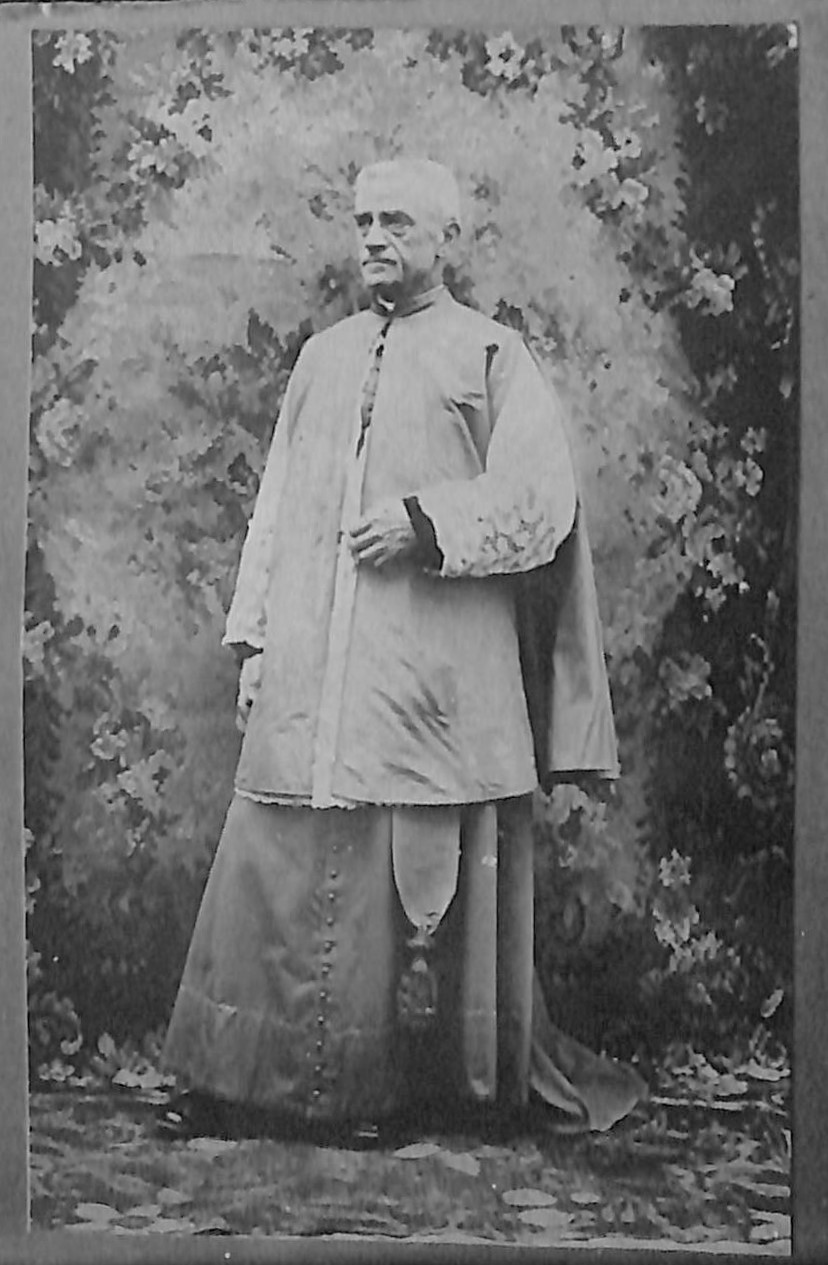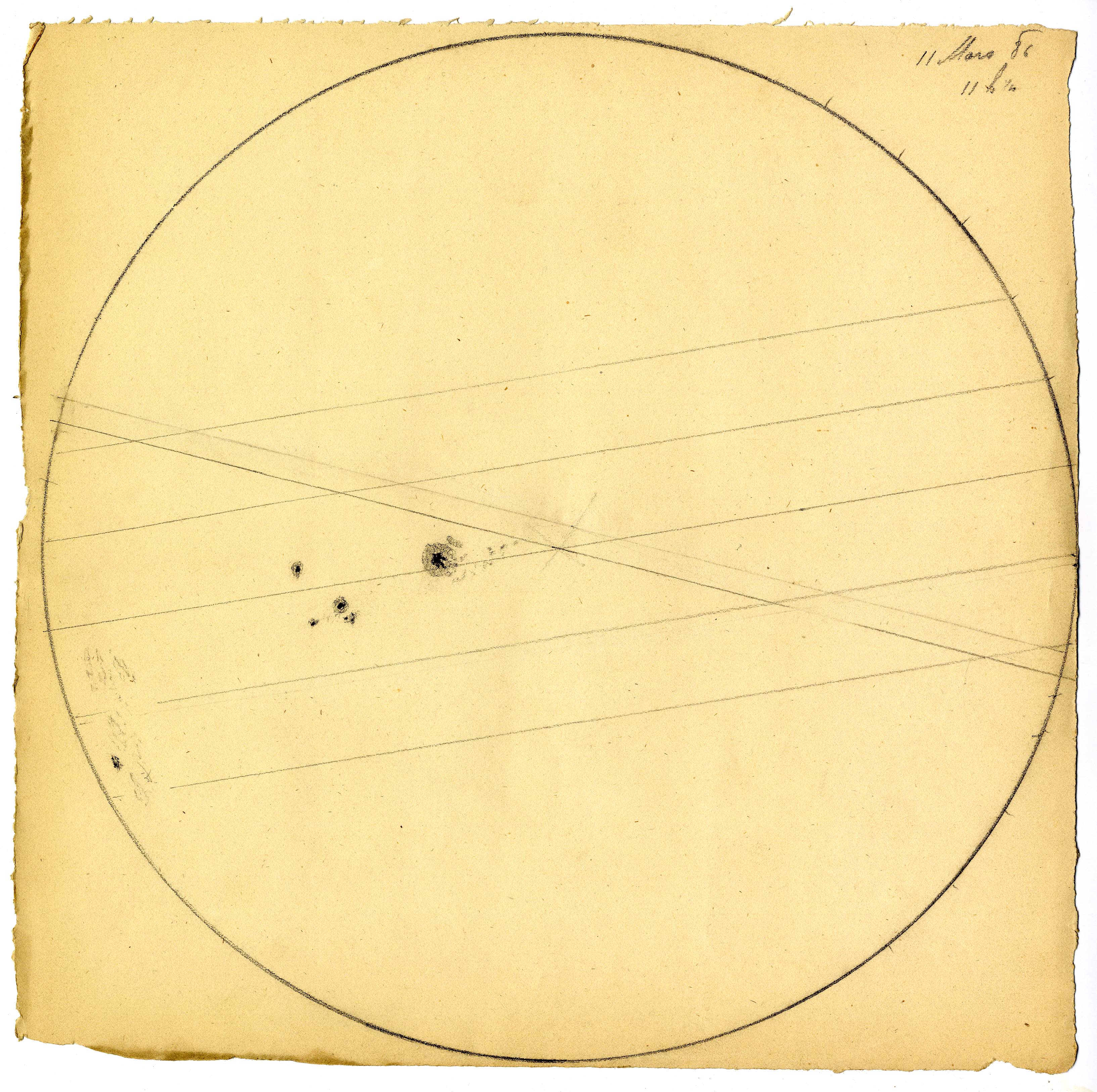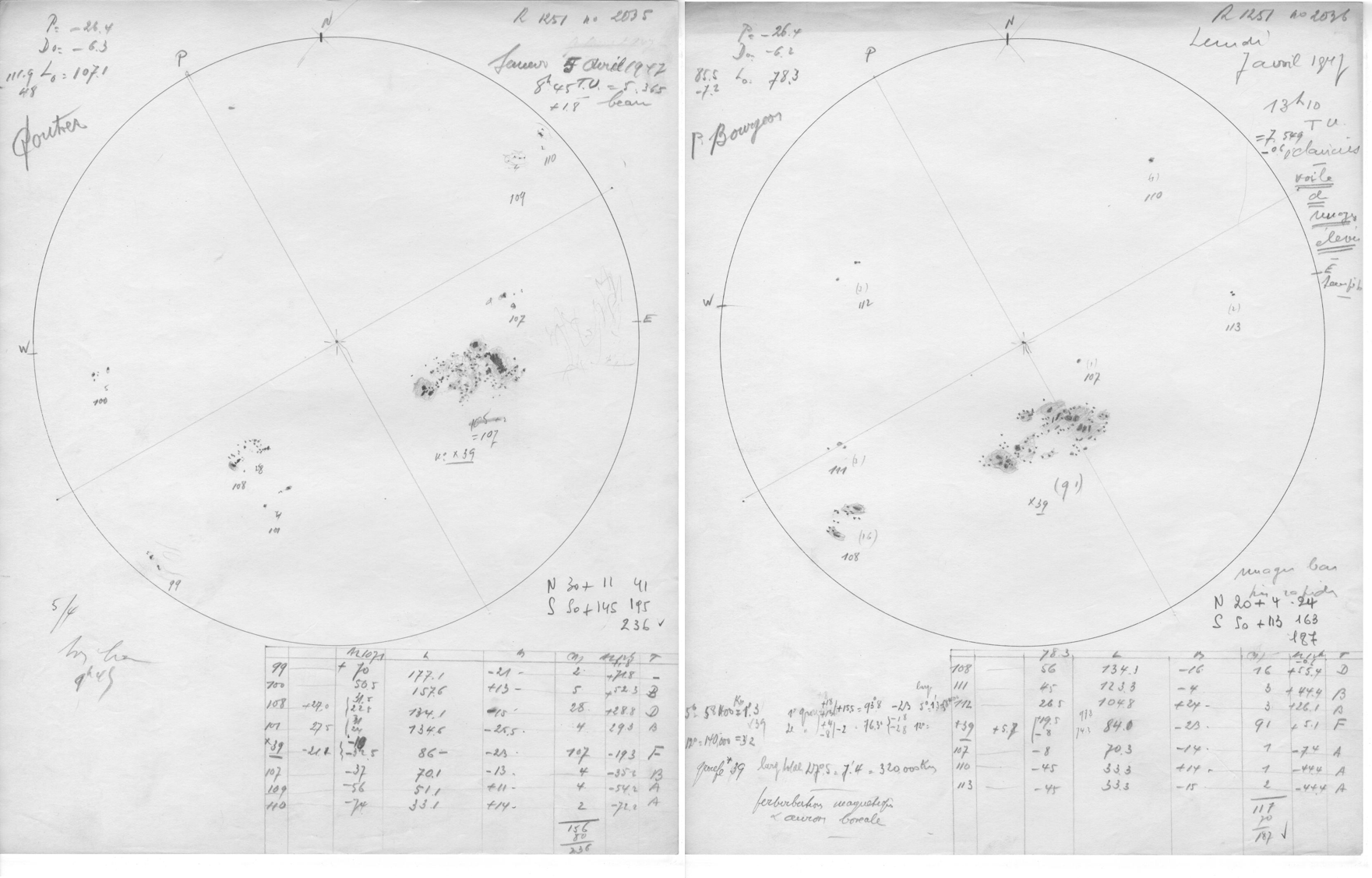Eugène Spée, precursor for solar physics at the ROB
Solar physics at the Royal Observatory of Belgium (ROB) has deep roots that go as far back as the late 19th century. However, the path to the current SIDC research team was not a simple continuous one. It involved a first promising era, followed by a 33-year long hiatus.
We owe the first era of solar studies to a single central actor, Eugène Jean Hubert Spée (Liège, November 19, 1843, Grivegnée, December 11, 1924). Spée got his PhD at the Catholic University of Leuven in 1874.

Portrait of Eugène Spée
Simultaneously, he pursued a religious vocation and became Canon of the catholic church. Immediately after his PhD, he moved to the Observatory of the Jesuit Collegio Romano in the Vatican (Rome), where he worked as assistant of the famous Italian solar physicist Angelo Secchi (1818-1878). There, he took part in the daily solar observations and developed an expertise in solar spectroscopy, a new technique of which Italian solar observers were then at the forefront.
After 10 years in Rome, on August 23, 1885, Eugène Spée was appointed astronomer at the Royal Observatory of Belgium. During his 23-year career at the Observatory, until his retirement on January 24, 1909, he devoted his research primarily to the Sun. His main achievements were accomplished in solar spectroscopy.
Spée continued the work of French solar spectroscopist Louis Thollon (1829-1887) of the Observatory of Nice, who had undertaken the first comprehensive cataloging of all absorption lines in the visible range of the solar spectrum. Thollon had started with the red part of the spectrum, working blue-wards, but he had only reached the green part, with already 3000 registered lines, when he died in 1887. Spée continued the construction of the second half of the spectrum over the green and blue parts. For this work, he made several scientific missions at the Observatory of Nice. This first atlas of the solar spectrum formed the base of the subsequent work by H.A. Rowland (1848-1901), inventor of the diffraction grating.

Sample drawing by Spée for March 11, 1886 (first year of his observations)
Next to the solar spectrum, Spée also made regular drawings of sunspots, which are preserved in our archives. Those high quality drawings have a projected solar diameter of 25 cm, and were most probably made with the 16cm Merz-Grubb refractor that is still in use nowadays for the Uccle sunspot drawings (USET). This early collection includes a few hundred drawings made over the period 1886 - September 1906. As shown by his publications, Spée was particularly interested in the evolution of the morphology of large sunspots, their motion and their relation with prominences recorded by spectrographs in chromospĥeric lines. Sun-Earth relations, now called "space climate", were also part of the issues that he considered, with titles like: "Of the solar activity compared to terrestrial magnetism" (1886) or "Does the physical state of the Sun have an influence on the Earth global temperature?" (1894). So, the hot questions of the 21st century have been already in the mind of solar physicists for quite a while!
By 1905, Spée's health degraded and his frequent and long absences led to tense relations with the ROB director, who was then Georges Lecointe (1869-1929). The Director finally obtained to terminate Spée's tenure by hasting his official retirement. Perhaps because of this unfortunate contentious episode, Lecointe decided to close all solar-related activities at the ROB, thereby ending Spée's early solar legacy. It took many more years and a change of director before a new era opened for solar physics at the ROB, with the start in 1939 of the first systematic sunspot drawings of the modern Uccle collection. The new primary observers were Gaston Coutrez, Paul Bourgeois and André Koeckelenbergh, who later became the first director of the SIDC in 1980. This revival was followed by many other achievements in the decades that followed: radio astronomy, world data center for sunspots, space-borne EUV coronal imagers, up to the STCE today.

Sample drawings from the early years of the new series, made by Gaston Coutrez and Paul Bourgeois: April 5 and 7, 1947, with the largest sunspot group of the 20th century. The drawing of April 7 contains annotations mentioning the visibility of an aurora borealis and geomagnetic disturbances (lower left corner).
This contribution was written by Dr Frédéric Clette (SILSO).





